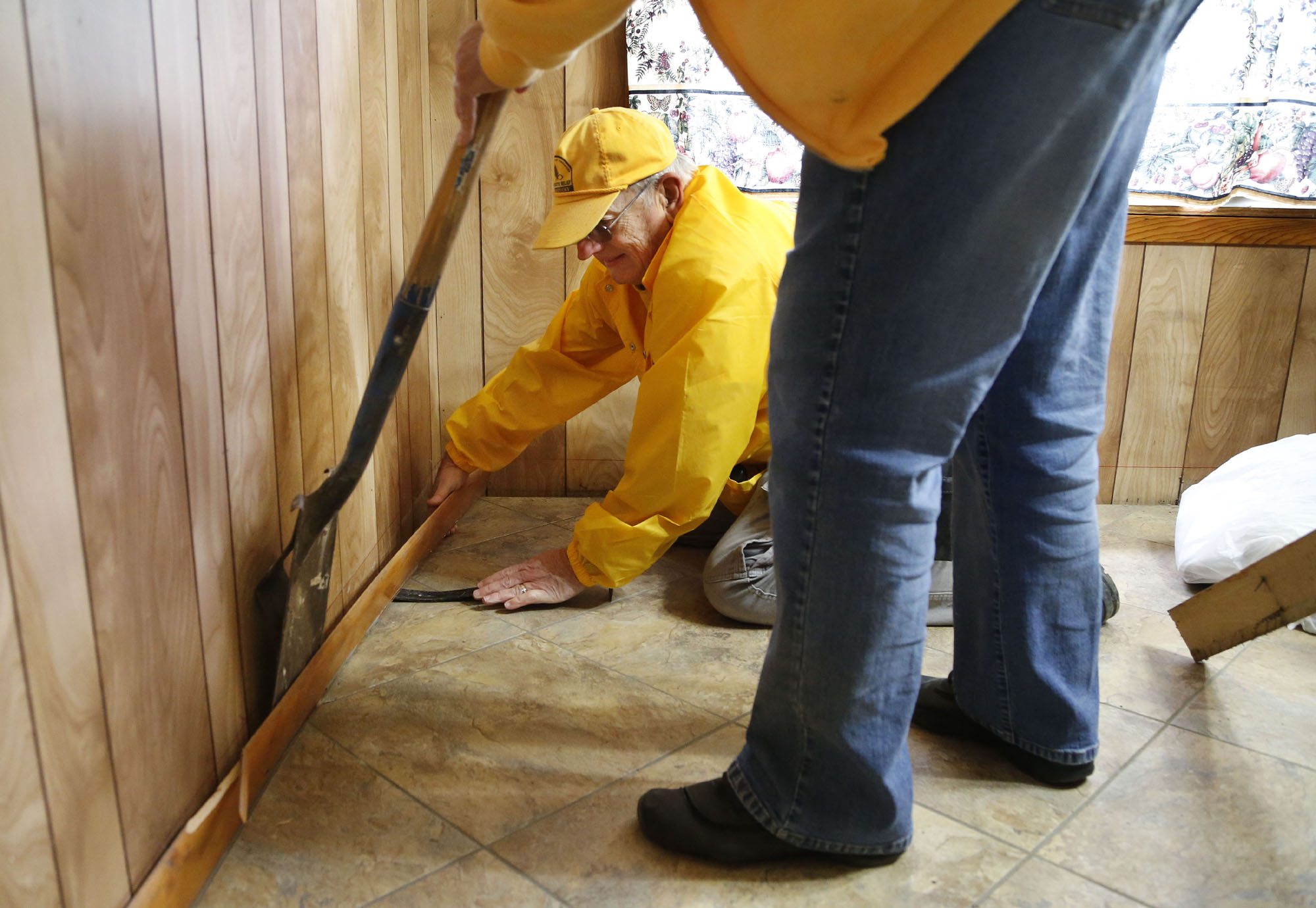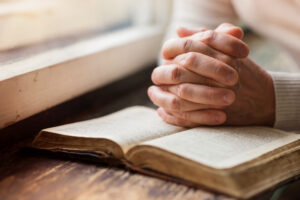
[SLIDESHOW=42457,42458,42459]HOUSTON (BP) — A flash flood on April 18 swamped Houston when as much as one foot of rain fell on the nation’s fourth largest city, claiming seven lives and making it the wettest day there since 1888.
Most of the victims died in their cars while trying to traverse flooded roads. An estimated 1,200 Houstonians required rescue assistance.
The city finally caught a break on Friday, April 22, their first dry day since the initial downpour, though rain returned on Sunday along with tornado warnings. Citizens reported tornado sightings in southeast Harris and Galveston counties.
Disaster relief teams from the Southern Baptists of Texas Convention (SBTC) and Texas Baptist Men (TBM) are coordinating efforts in Houston.
An SBTC feeding unit operating out of the Humble Area First Baptist Church is supporting the American Red Cross’ shelters. Many Houston-area churches have requested training from SBTC for mud-out operations in homes.
“Many unchurched in our community are suffering from the floods,” said Barry Jeffries, senior pastor of Humble Area First Baptist Church. “Those we minister to are curious as to why we would help neighbors we don’t know. Doors open through disaster.”
Houston’s Northwest Baptist Church is hosting SBTC’s mud-out teams.
“We look forward to working with the churches in the greater Houston area,” said Scotty Stice, SBTC’s disaster relief director. “We’ve received calls from pastors wanting training to engage their people in the community. We will support the churches.”
Besides feeding units and assessors that inspect homes for mud-out services, SBTC has mobilized chaplains, laundry units from Missouri and multiple shower units to support volunteers.
Terry Henderson, TBM’s disaster relief director, has mobilized chaplains and assessors while also helping churches that have begun cleaning homes. Their base of operation is Copperfield Baptist Church in northwest Houston, which is surrounded by four subdivisions with an estimated 600 flooded homes.
Several churches with existing mud-out units have begun operations in their communities, including Kingsland Baptist Church in Katy and University Baptist Church of Houston, which is serving the Memorial area of the city.
Houston is home to Union Baptist Association (UBA), Southern Baptists’ largest association with approximately 600 churches. Tom Billings serves as the association’s executive director, and he said there are no reports of damage to any association churches. But he has firsthand experience seeing floodwaters destroy property. When Tropical Storm Allison hit Houston in 2001, more than six feet of water flooded the UBA offices.”
“The experience of having your home flooded is devastating,” Billings said. “There is a real sense of helplessness as you watch the water rise and know there is nothing you can do to stop it.
“Many of the homes affected by recent flooding were in areas that had never flooded before, so there was also a sense of shock at being flooded out. Like the waters, though, the level of people’s compassion rises to the meet the need.”
Houston is America’s most vulnerable city to death and injury due to flooding, according to Samuel Brody, director of the Environmental Planning and Sustainability Research Unit at Texas A&M University. The city sits on soft soil and is the second fastest growing city in the U.S. Buildings erected to accommodate that growth replace pastures, which are better suited to handle the rain and its runoff.
The Army Corps of Engineers is beginning to release water from two West Houston reservoirs, Addicks and Barker, which were at capacity and about to overflow.
“We’ve never seen this much water,” U.S. Army Corps Project Manager Richard Long told Houston area media April 21. “It causes me concern, but I am comfortable with the project, with the dams and the way they are functioning.”
The Houston floods came as the state continued to recover from floods in East Texas along the Sabine River. Most disaster relief organizations have pulled out and turned their focus to Houston, but TBM still has 47 volunteers there.
“We’re sticking to the commitment to finish Orange and Newton counties,” Henderson said.
Meanwhile, the Louisiana Baptist Convention (LBC) continues its recovery efforts there from earlier Gulf Coast flooding. David Abernathy, LBC’s disaster relief incident commander said recovery there is happening mostly in the northeast and northwest regions of the state.
“After seven weeks, the response has been fabulous,” Abernathy said. “We couldn’t ask for more than what different states have given us.”
The disaster response based out of North Monroe Baptist Church will likely run through mid-May, Abernathy said.
Those wishing to donate to Southern Baptist Disaster Relief (SBDR) can contact the Baptist convention in their state or visit https://donations.namb.net/dr-donations. For phone donations, call 1-866-407-NAMB (6262) or mail checks to NAMB, P.O. Box 116543, Atlanta, GA 30368-6543. Designate checks for “Disaster Relief.”
NAMB coordinates and manages Southern Baptist responses to major disasters through partnerships with 42 state Baptist conventions, most of which have their own state disaster relief ministries.
Southern Baptists have 65,000 trained volunteers — including chaplains — and 1,550 mobile units for feeding, chainsaw, mud-out, command, communication, child care, shower, laundry, water purification, repair/rebuild and power generation.
SBDR is one of the three largest mobilizers of trained disaster relief volunteers in the United States, along with the American Red Cross and The Salvation Army.
















